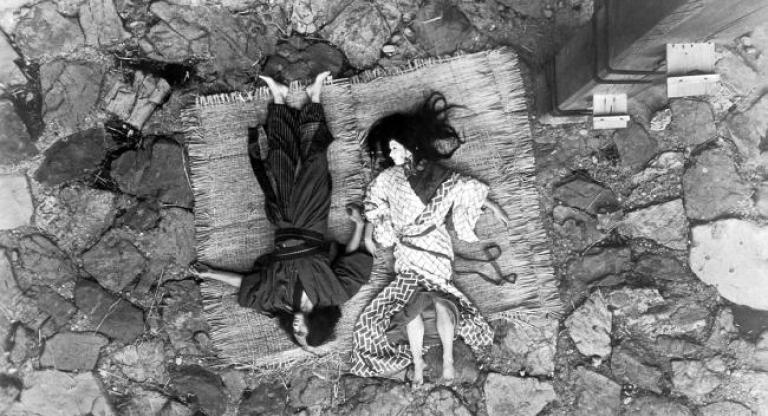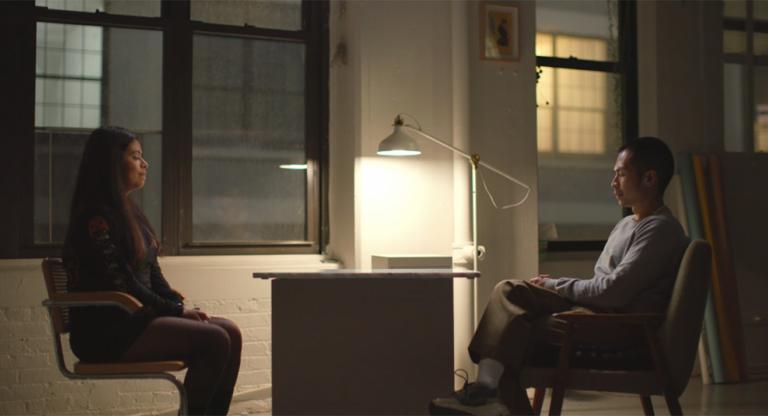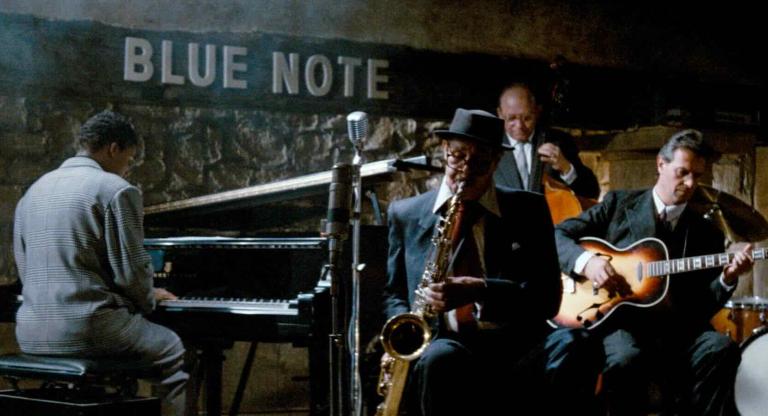With Los Angeles Plays Itself (2003), Thom Andersen put Kent Mackenzie’s 1961 “anti-social-documentary” The Exiles back on critical radars. “The movies loved Bunker Hill,” Andersen narrates, “The lords of the city hated it. Rents were low, so it put the wrong kind of people too close to downtown.” Andersen’s opinion of many of the films in his essay is at best ambivalent, but he considers The Exiles the best Bunker Hill movie because, “better than any other . . . it proves there once was a city here before they tore it down and built a simulacrum.”
The Exiles aims to provide an “authentic account” of the lives of young Apache, Hualapai, Choctaw, and Mexican Natives in Bunker Hill. The neighborhood was then a formerly tony Los Angeles neighborhood slated for redevelopment; it is now the home of the LA World Trade Center and Walt Disney Concert Hall. To foster authenticity, Mackenzie spent months researching Native American culture and hanging out with his subjects in their Main Street bars and haunts. He also hired a Mescalero Apache Disneyland performer named Eddie Sunrise Gallerito and his band to provide chant music for the soundtrack. Most importantly, Mackenzie considered the actors co-creators; taped interviews about their lives constituted the bulk of story material and dialogue, over a decade before A Chorus Line (1975) supposedly pioneered the concept, and every change to the story was made with their approval.
Once the film turned a profit, everyone who worked on it stood to benefit according to the amount of hours invested. Mackenzie, a British transplant who made only a handful of shorts and one other feature before dying at age 50, kept fastidious notes and even hired a private detective years later to track down and pay crew members.
Plenty happens over the film’s Friday night, but there’s no plot; that would imply change or forward motion. Pregnant Yvonne wanders alone, catches a movie at the Roxie on Broadway, and eventually ends up in her friend Marilyn’s bed (draw your own conclusions), where she waits for her restless husband Homer and their loutish roommate Tommy to play out their usual Dionysian routine: drink, dance, gamble, fight, fuck, repeat. None are happy, and even though they would never go back to the reservation, home still exerts a strong pull. When Homer receives a letter from his parents and imagines their Arizonan idyll, the scene plays without subtitles, as does all Indigenous dialogue in the film. It’s this type of thick, precise, lived-in detail that made the film essential for Andersen and gives it an accretive power, from the shellacked coifs to the original songs by The Revels blaring from jukeboxes, radios, and TVs. (“Comanche,” Pulp Fiction’s gimp theme, was written for The Exiles but eventually cut.)
After the Main Street bars close at 2 am, the group drives a couple miles north to “Hill X” in Chavez Ravine to gather with other Indian expats and perform a traditional forty-nine dance, free from police surveillance. Like Bunker Hill’s dilapidated mansions and tenements, Hill X would soon be gone; shortly after filming it was removed to make way for Dodger Stadium.
The Exiles screens on 35mm, Friday, September 13, at BAMPFA, with an introduction by May HaDuong, Director of the UCLA Film & Television Archive.
Previously:
The Exiles screens tonight, March 21, at IFC Center, as part of “Queer|Art|Film.” The artist Jeffrey Gibson will be in attendance to introduce the film.






